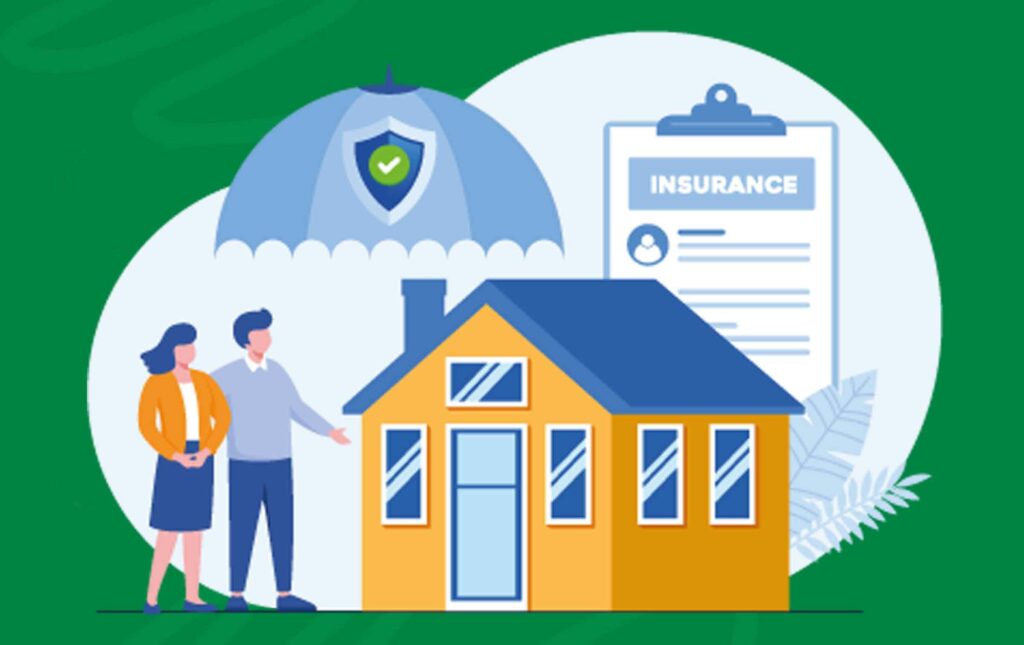Recoverable depreciation in home insurance is the difference between the replacement cost and the actual cash value (ACV). A recoverable depreciation provision in a homeowner insurance policy allows the policyholder to claim that difference. Over time, the majority of common home items deteriorate or lose value.

Additionally, if you purchase a $2,000 couch, it may eventually lose 10% of its worth. Unless there is a recoverable depreciation clause in your policy, your insurance company may only compensate you $1,000 if it is destroyed by fire five years later. Moreover, if the provision is present, you will receive $2,000, including $1,000 in ACV and $1,000 in recoverable depreciation. Furthermore, the replacement cost value is another term for replacement cost that may be used in an insurance contract.
How Recoverable Depreciation in Home Insurance Works
The term depreciation in home insurance describes an item’s gradual loss of worth. If you have replacement cost value coverage on your house insurance policy, you will typically hear the term recovered depreciation. Understanding the distinctions between replacement cost value (RCV) and actual cash value (ACV) is crucial for comprehending recoverable depreciation.
Additionally, ACV insurance only covers the depreciated value of your property in a claim, as depreciation is not recoverable. However, you may recover the value of lost or damaged goods over the years since their purchase with RCV coverage. In addition, we refer to this sum as recoverable depreciation.
Moreover, insurance depreciation is often determined by:
- The item’s age
- The degree to which it has endured over time
- Based on updated versions, how out-of-date is it?
How to Calculate Recoverable Depreciation in Home Insurance
Generally, an insurance adjuster establishes an item’s depreciation by conducting claims investigations on the insurer’s behalf. The item’s life expectancy and replacement cost are considered, often based on standards set by the National Association of Home Builders or the government. For instance, if a covered incident damages your two-year-old fridge, the cost of a new one is $2,000.
Your refrigerator will depreciate by 10% annually if an adjuster estimates that it will last 10 years. In addition, your refrigerator lost $400, or 20% of its value, in the two years you kept it. Moreover, your insurance provider will initially determine the actual cash value (ACV) of the wrecked or damaged property if you file a claim under the replacement cost policy.
How Recoverable Depreciation Affects Home Insurance Claims
Generally, claims result in cash value in the form of a check, less the deductible for ACV and RCV coverage. For instance, if the monetary worth of a damaged item is $1600, you would receive $600 in a check, and your insurance deductible is $1000. Furthermore, RCV coverage allows insurers to provide a second check for recovered depreciation, which can be used for new purchases, repairs, and receipts submitted.
How to File Home Insurance Claims in Recoverable Depreciation
If your coverage contains a recoverable depreciation provision, reimbursement follows a few stages. The check you receive may be less than your deductible, which is the amount you must pay out of pocket before insurance starts covering claims.
Inform Your Insurance Provider and Adjuster
As soon as you can, inform your insurance provider that you intend to recoup your depreciation. Several states have a six-month or one-year statute of limitations on filing claims.
Change or Fix the Things
If you are replacing products, try to find equivalent-priced alternatives. It is not possible to purchase a thing at a lower cost and keep the difference. Additionally, even if you buy an updated version, you’ll only get paid back for the recoverable depreciation.
Compile Documentation
Keep track of any receipts, contracts, and other papers when you replace or repair your belongings. You should also make a note of which expenditures correspond to which item.
Send in a Refund Request
After reviewing your documentation, your insurance provider will get in touch with you regarding the recoverable depreciation claim. If you dispute the value that your insurance provider has determined, you are free to bargain for a higher amount for your recoverable depreciation check.
Who Needs Recoverable Depreciation in Home Insurance
The drawback of purchasing insurance with recoverable depreciation is that it is usually more expensive than actual cash value coverage. However, it does provide for a higher degree of compensation for your possessions. In the case of a claim, you could save money with it. You might not have enough money to buy new stuff or fix things at the going rate if your coverage just pays out the actual cash value of your property.
If your insurance covers recoverable depreciation, you will receive a larger compensation amount after verifying repairs or replacements. This may make it a wise option for people who wish to avoid paying for things out of pocket following a claim. You can be qualified for benefits beyond the cash value of a covered item if your home insurance policy includes replacement cost value. However, you will need to save receipts and other supporting evidence to provide to your insurance to claim recoverable depreciation.
